SEO is a constantly evolving animal. An algorithm upgrade puts a kink in your plan when you think you know exactly what Google is looking for.
So, what is a person to do?
While algorithm adjustments and enhancements will continue, some tried-and-true SEO strategies will remain in use. You can improve your results and make your site more resistant to changes from Google by using these methods on your site.
With SEO, there are two methods for affecting change: on-page and off-page SEO. In this post, we’ll take a closer look at both.
Tips for On-Page SEO in 2023
Focusing your efforts on on-page SEO methods is an excellent place to start if you’re new to SEO or want to make rapid, impactful adjustments.
Here are some key SEO pointers to bear in mind as you plan your approach for 2023.
1. Look for keywords with long tails.
Long-tail keywords are more precise and lengthier than standard target keywords. Although they have a lower search volume than shorter terms, they can be extremely useful.
Long-tail keywords reveal why individuals search for something specific rather than just what they’re looking for. In comparison to shorter terms, they currently account for a higher search volume.
Long-tail keywords account for 91.8 percent of all searches, according to a recent survey. This is a significant shift from the internet’s early days.
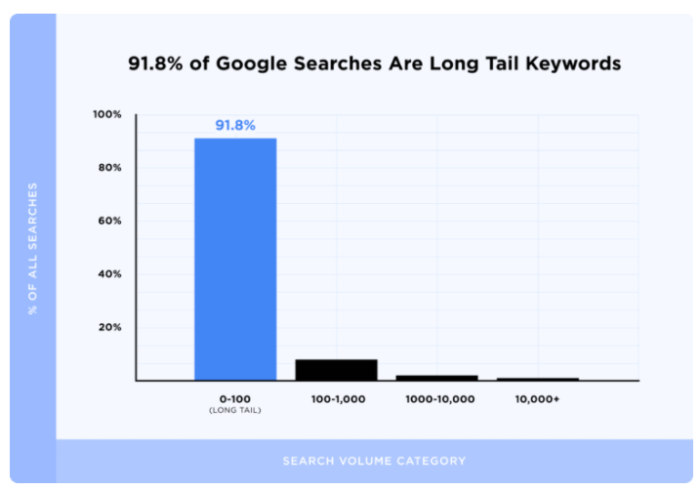
Long-tail keywords have a higher search intent, which is one reason to use them. Because they are more particular, you may narrow down the keywords to those that are most closely related to the actions you want users to take on your website.
“How to rank on Google” is an example of a long-tail term. As opposed to a short-tail term like “Google ranking,” this is a long-tail keyword.
These versions have completely different intentions. When someone asks “how to rank on Google,” you can tell that they are looking for a direct answer, which is what they are looking for.
We don’t really know what the user’s purpose is when it comes to “Google ranking.” Perhaps they’re just trying to figure out what it means.
Long-tail keywords, while not always the case, tend to have lower search volume and, as a result, lower competition. As a result, they may be simpler to rank.
How can you make long-tail keywords work for you in your content?
You don’t want to cram a bunch of long-tail terms into your current content in the hopes that something will stick. This could have the exact opposite impact of what you want.
Add long-tail keywords to your content with these tips:
- Make a list of the blog subjects you’d like to discuss.
- Use a keyword research tool to enter the most general phrase or title of each topic.
- Identify long-tail keywords with a high search volume and low competition (CPC) that are connected to your chosen themes.
- Reduce the number of terms on your list to those that have high search intent. If you’re a credit card company, for example, and one of your themes is “how to open a credit card for the first time,” a long-tail keyword you could target is “how to open a credit card for the first time.”
- Create material that satisfies the user’s goal in relation to the chosen term.
2. Include keywords in the alt text of images.
An image’s alt text, also known as alternative text, is a brief description of the image. According to MozCast, it is still a significant Google ranking element, with more than a 20% impact on results.
There are three main uses for alt text:
- Accessibility: For visually impaired users, alt text is read aloud using a screen reader. Unfortunately, 55% of e-commerce sites do not meet basic accessibility standards.
- When an image cannot be loaded onto the page, the alt text shows as a substitute to give readers context.
- Search engine optimization: Alt text is used by search engine crawlers to help them properly index a picture. In 2021, Google stated that alt text is “still vital for SEO.”
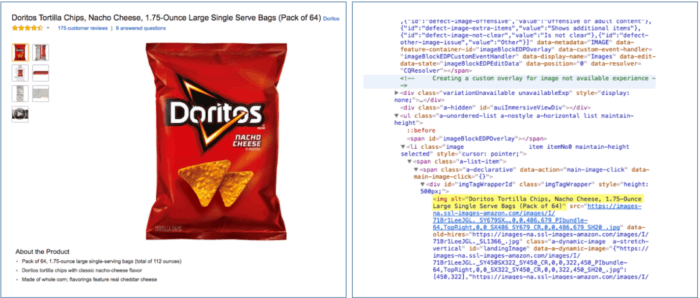
Google’s algorithm improves as the internet gets more accessible. This means that accessible websites will take precedence over inaccessible websites. After all, the more accessible a site is, the more traffic it may generate.
Use keywords in the alt text in the following ways:
- Consider the image first and then create a description to go with it.
- Make sure your description accurately describes the image. Don’t overcomplicate things.
- Consider how you might include your primary or secondary keywords in the alt image text. For instance, stating that an image is a screenshot of the process described in your content.
3. Incorporate keywords into your headers.
When you utilize keywords in headers, you’re telling search engines and consumers that your content matches the search terms’ target intent. Keywords added in headers can provide context for search engine bots in the same way that a table of contents does for users.
While 36% of SEO experts believe headlines are crucial, this does not mean that keywords should be forced into place if they don’t make sense.
Before determining where to insert your target keywords or other variations, think about the user experience and Google’s recommendations. At all costs, keyword stuffing should be avoided.
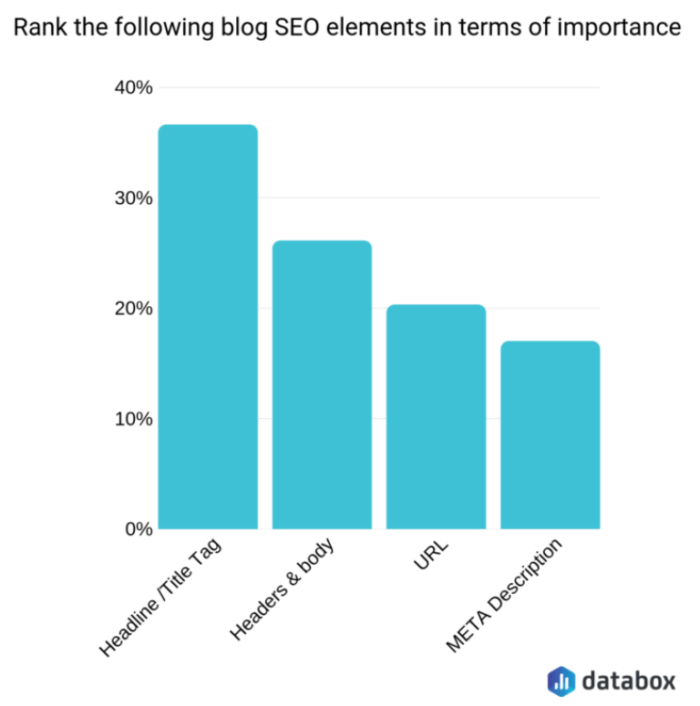
Tips for employing keywords in headers include the following:
- Choose your post’s target keyword to include in the headers.
- Enter the keyword into a keyword research tool to uncover alternative variations of it.
- Use the term and its variations in your headers as much as possible (at least 40% of headers).
4. Prioritize excellent user experience (User Experience).
In addition to keywords and content, you must consider your users’ experience from beginning to end.
When ranking your website, Google considers a number of variables, one of which is the amount of time spent on the page (or dwell time). If visitors leave your page within seconds of visiting, this tells Google that it isn’t the material they are seeking.
The time it takes for a page to load has an impact on dwell duration and bounce rates. According to an analysis of over 5 million desktop and mobile pages, the average time it takes for a web page to fully load is 10.3 seconds on a desktop and 27.3 seconds on a mobile device.
The first five seconds of a page’s loading time have the greatest impact on conversion rates. Conversion rates drop by 4.42 percent on average for every additional second it takes for a page to load.
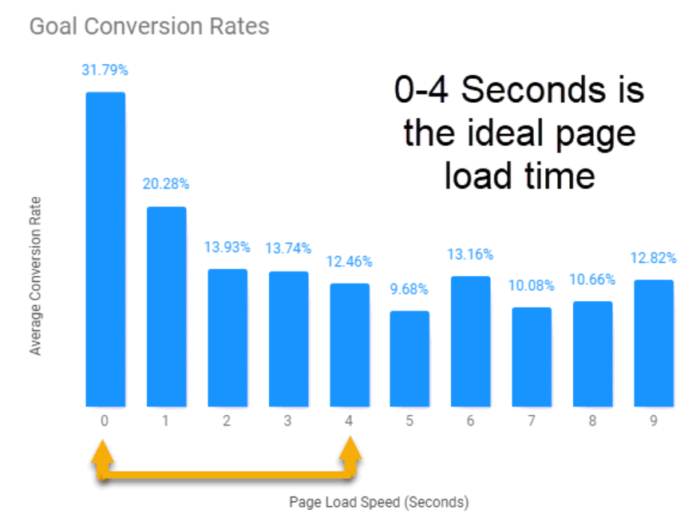
Google began rolling out its core Page Experience improvement in 2021, since user experience has become such a key ranking component.
Tips on how to make an excellent user experience:
- Make sure the information and visuals you’re using for each term match the search intent.
- At the top of the page, provide the most important information.
- Reduce picture sizes to reduce web page loading times.
Make it simple to navigate the content, especially for lengthier pieces. This can include things like a table of contents, clear headings, and fewer paragraphs.
Remove any extraneous content, such as redundant text, and don’t use images or fonts that are too distracting.
5. Use a variety of media types.
There are a few things you can do to help your SERP rankings indirectly. Using a variety of media types across your blog is one of them.
In addition to photos, audio files, films, ebooks, and GIFs are examples of media. As a result, these media types are designed to be interacted with, and as a result, they boost both dwell time and user experience on your website.
According to Hubspot, videos have surpassed blogs as the most popular form of media in most content strategies. Video marketing is used by 86 percent of firms to grow their business, while 84 percent of consumers report that watching a brand’s video influenced them to buy a product or service.
Audio consumption is also increasing, with the average consumer spending more time listening. 61% of companies intend to boost their digital audio advertising budgets as well.
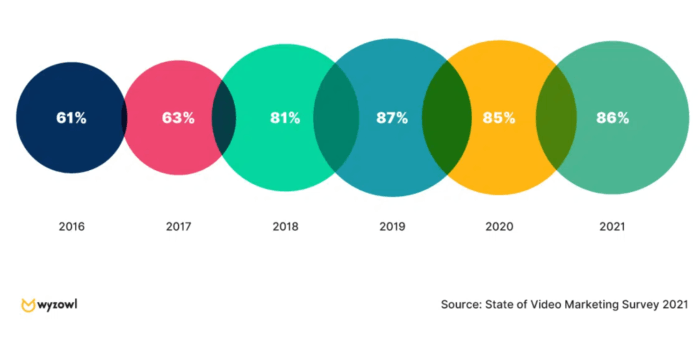
Finding methods to add videos and music to your blog can help you improve the user experience and boost the amount of time people spend on your site. You could start by adding short audio or video clips to your blog posts that help people understand difficult topics.
More media kinds can be included if you follow these guidelines.
- Create a YouTube channel if you don’t already have one to expand your marketing reach.
- In relevant blog posts, embed YouTube videos that discuss similar topics.
- Include audio clips from podcasts that are relevant to your topic.
- Use data visualizations and other creative graphics to make data and statistics more appealing.
6. Use internal hyperlinks.
As I previously stated, Google takes time spent on a page into account when ranking your website. Another comparable metric is the amount of time spent on your entire website. Another important ranking component in Google’s algorithm is this.
The longer a user spends on your site, the deeper down the funnel they will most likely go. It also tells search engines that your content is of good quality and relevance.
More than 80% of SEOs feel that each blog post should contain at least 2–5 internal links, with the majority of people devoting the same amount of time to both internal and external linking tactics.
The following are the two most important measures for improving the amount of time people spend on your website:
- In-depth, compelling content
- Internal link to relevant material.
When you link to internal information, you’re taking your visitors further into your site. This enhances the likelihood of them engaging with your content in meaningful ways (e.g., by posting a comment on a blog post or sharing it on social media), which is advantageous to SERP rankings in and of itself.
Tips for implementing and maximizing internal linkages include the following:
- Choose pages with extra content that is related to the search term the user used to find you.
- Use natural-sounding anchor text to entice users to continue to the next page.
- Use generic anchor texts like “click here” or “read more” instead. Google can better understand how to index your page if you use more detailed anchor text.
- People should always be able to get to the most important parts of your website in three clicks or less.
7. Concentrate on the “Funnel’s Top” Phrases with Keywords
The funnel’s three main stages are awareness, contemplation, and decision.
When I say “top of the funnel,” I’m referring to the keyword phrases that catch the attention of potential clients. In fact, 95% of marketers make sure that their brand’s content is optimized for keywords at the top of the funnel.
The goal of content that addresses these terms is to raise “awareness” of the subject. They entice the reader to take action without expecting them to. The rest of the funnel is for that purpose.
How do these keywords appear? Top-of-the-funnel keywords are those that respond to more general inquiries regarding the subject. There are many different examples of how they appear, but here is one that I know about:
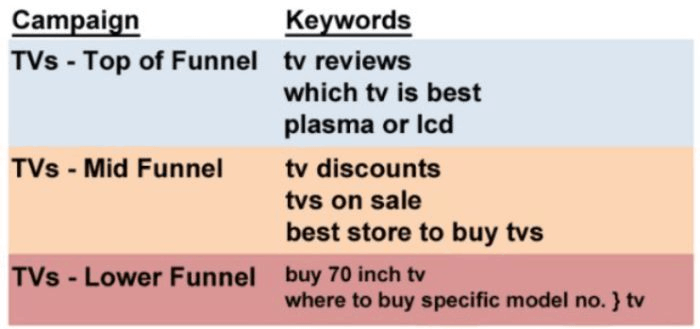
By concentrating on these keywords, you accomplish two objectives:
- Due to the increased search volumes for these terms, you’ll be able to reach a broader audience.
- Attracting consumers earlier in the study cycle
Tips for selecting top-of-funnel keywords include:
- Choose terms with a large number of searches and little SEO competition.
- Make a list of extra keywords that are linked to the terms you’ve picked and reflect different stages of the buyer’s journey. This will help you make sure that the traffic you bring in turns into leads or sales.
- Create up to three client personas for the “head of the funnel.” Based on these personas, you can ensure that each search query fits the type of customer you want to sell to.
SEO Tips for 2022 (Technical/Offpage)
Even though technical SEO is frequently overlooked when developing a plan, it is still an important component. It doesn’t appear that Google will change its mind anytime soon.
Here are some significant technical SEO recommendations for 2022.
1. Remove any questionable backlinks.
Backlinks used to be thought of as SEO’s “hidden gem.” Backlinks still play a big role in Google’s rankings, but the quality of those backlinks is now more important than ever.
Google released a new algorithm change in 2021 that targeted and discounted poor backlinks. While no specific sites were penalized as a result of the procedure, it did stop counting a large number of backlinks that many sites had grown accustomed to, which had an impact on rankings.
Many websites, accounting for 91 percent of all web pages, still receive no organic traffic from Google.This is due to the fact that more than half of those pages have no backlinks.
If you own a website, you’ve most likely gotten backlink requests in the past. They may even offer to pay you to do so. Most of the time, the requests come from people who own websites that have lower domain authority scores than yours or who use questionable SEO techniques.
It’s critical to thoroughly verify all backlink requests, just like you would with content sources, to ensure that they won’t have a detrimental influence on your site. How do you find out which sites link to you and how you stack up against your competitors? With the help of a backlink checker program, Simply enter your domain URL to get a detailed report on your backlink profile.
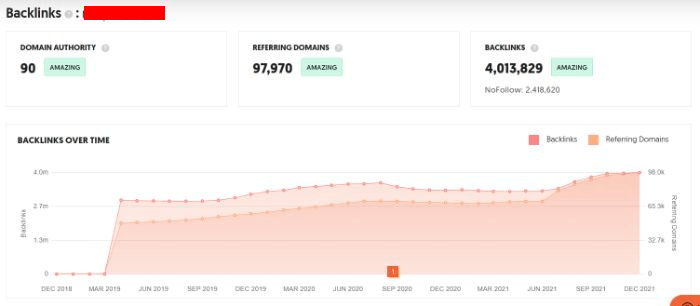
You can also examine each connecting site, their domain authority, and the anchor text they used to link to you on a more detailed level.
How to get rid of spammy backlinks:
- Conduct a backlink audit to determine how many backlinks your website currently has.
- Before you disavow a bad backlink, try contacting the website and requesting that it be removed.
- According to Google, all websites that provide affiliate connections to your site must qualify the links, so make sure to ask any affiliates to include the appropriate HTML tag.
2. Develop a Personal Brand
Since the late 2000s, Google has been emphasizing brands more and more. They look for brand signals in particular to sort out false information and deliver more reliable results for each search. As a result, it is a crucial ranking component.
In 2016, I saw a big rise in traffic because of one thing: the growth of the Rankers Paradise brand through my web 2.0 backlinks blog post.
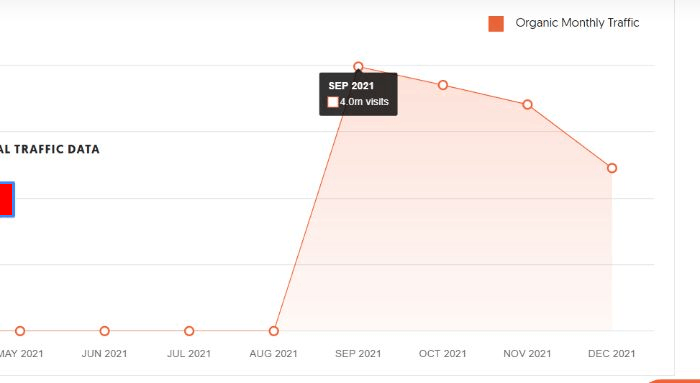
A company’s revenue can grow by up to 23 percent when it is consistently portrayed across all of its platforms. Branding also makes presenting your ideals and increasing client loyalty easier. According to 89 percent of customers, they are willing to stay loyal to firms that reflect their beliefs.
With the development and expansion of your brand, you will begin to receive more traffic from both non-branded and branded terms. That’s why each month I get a lot of organic traffic from the SERPs!
Tips for establishing your brand include:
- Determine which social media channels your target market uses and customize your strategy accordingly! Because social media is used by 82 percent of Americans, you should feel comfortable using it to market your business.
- Consider developing a collaboration with a brand that is similar to yours. For example, Lego and IKEA, for example, created a mutually beneficial alliance. See if you can collaborate with companies whose products or services compliment your brand.
- Make sure to highlight your business’s personality, stories, and values when you develop your brand awareness campaign. More than just what you sell should be discussed. This is more likely to resonate with your target audience!
3. Create strategic content as well as thought leadership.
It’s time to think more carefully about your website’s pillar content (i.e., material that targets relevant keywords). You want to be more than just a resource site; you want to be authoritative. This can be accomplished through thought leadership and strategic content.
In fact, 54% of decision-makers claim they read thought leadership content related to their organization for more than an hour every week. At the same time, 71% agree that less than half of what they read provides them with useful information.
This indicates there’s still a lot of money to be made with this stuff. It asks you to think forward and respond to questions that have yet to be answered. By being ahead of the curve, you’ll be able to communicate directly with industry leaders and subject matter experts.
While creating this type of material requires more time and effort, it is definitely worth the effort. When you generate content that other brands want to link to, your brand grows and your backlink portfolio expands.
Tips for developing thought leadership and more strategic content include the following:
- Look for developments in your sector over the next 5–10 years and create content that addresses them.
- Consider how data can be used to answer frequently asked questions in your sector. Make sure you know which topics you can help with important data points and which ones you can’t.
- Create content that showcases your findings based on internal or external research. This will help you position yourself as an industry leader, which will lead to greater prospects for backlinks from other sites that reference your material.
- Set up Google alerts to be informed about breaking news and events in your industry. Be one of the first to write about and share your thoughts on the subject, backed up by relevant data.
4. Make Your Backlink Profile More Diverse
What does diversifying your backlink profile imply? In other words, you want as many links from as many different websites as possible.
According to an Ahfrefs survey of more than 1 billion web pages, 66.31 percent of them had no referring domains and 26.29 percent had one to three referring domains. Consider this: less than 0.1 percent of websites have more than 100 referring domains, which is astounding.
When obtaining backlinks, you should ensure that the anchor text employed is diverse. Here are some instances of distinct variations to keep an eye out for:
- Rankers Paradise is our branded anchor text
- We should think about the future of SEO, “is a long-tail anchor text.”
- “https://rankersparadise.com/off-page-seo/” is a bare link anchor.
As I said in the previous section, a backlink checker is a great way to collect this information.

Diversify your backlink profile with these tips.
- To diversify your links, seek out links from directories and other resource roundups.
- Make contact with websites that are a natural fit for your business. Request that they link back to you and vice versa.
- Check your competitors’ backlinks to see where they receive their links. Look for websites that are comparable to yours that will link back to you.
5. Enlist the assistance of subject matter experts to improve your EAT score.
Expertise, authority, and trust are all represented by the letters “EAT.”
One of the most essential variables in judging page quality is the EAT score. While you don’t have to be an expert or authority on every topic you write about, you should strive to be like those people in order to produce content that receives a higher score.
Before speaking with a sales professional, 47% of buyers will read three to five pieces of information. By collaborating with subject matter experts or copying their material, you may increase the likelihood of a buyer engaging with your content before moving on to the next stage.
Whether you’re creating thought-leadership content or not, subject matter experts can still assist you. While talks with such people are the best way to “steal” their authority, they aren’t the only way.
You can also link to other content creators’ interviews, include quotes from subject matter experts in your posts, and highlight other types of material the topic has created, such as films, podcasts, or infographics.
Subject matter experts can help you raise your EAT score in the following ways:
- Professional directories, such as trade periodicals, LinkedIn searches, and joining related Facebook groups are all good places to look for subject matter experts.
- Make sure the subject matter expert you’re focusing on is a good fit for the people you’re trying to reach.
- Be flexible with how you work with your selected subject matter expert if they don’t have a lot of time. This might be as simple as asking them to proofread your writing and crediting them on the website.
In 2022, avoid these SEO blunders!
Let’s focus on some things you should avoid now that we’ve gone through the most crucial methods by which you can dominate Google with improved SEO techniques in 2022.
Although not much has changed, many of these methods can still have a detrimental influence on your SERP ranks.
1. Keyword Stuffing
Keyword stuffing is the practice of packing as many keywords as possible into a piece of material, both direct and related. The theory is that the more keywords an article has, the more relevant it will appear on SERPs and the higher it will rank. However, the exact opposite is true.
Google’s crawl bots will mark a page as spammy if a keyword occurs too frequently on it. This will have a detrimental impact on rankings.
The most straightforward approach to avoiding this is to keep keyword density below 2%. This is true not only for the main keyword, but also for the topic’s associated keywords.
2. Cannibalization of a keyword.
When two or more pages on your site target the same major term, this is known as “keyword cannibalization.” This is prevalent on younger websites, where the owner may believe that splitting up larger bits of content to generate more pages is a better idea.
For instance, if the goal keyword is “meringue,” they might write two posts: one on “How to Make the Perfect Meringue” and another on “X Common Meringue Mistakes.” To avoid cannibalism, build a larger post that contains both of those post names as H2s. Pillar content is what it’s called.
3. Duplication of Content
Duplicate content is connected to keyword cannibalism in several ways.
Substantive blocks of content that match or are identical to other content on the site or across the internet are referred to as duplicate content. Plagiarism is a phrase used to describe the latter.
Use the following strategies to avoid Google labeling your website’s content as duplicate:
- Make use of 301 redirects.
- Maintain a logical URL structure.
- Top-level domains should be used.
- On syndicated content, use the noindex tag.
4. Anchor Text That Is An Exact Match
You don’t want exact match anchor text phrases to appear too frequently in your content, which is similar to keyword stuffing. Why? It sends a clear message to search engines that you’re attempting to sway rankings.
To avoid this, you must first determine the current state (i.e., partial vs. exact) of any and all links pointing back to your site. You can use Ahrefs’ Site Explorer to do so:
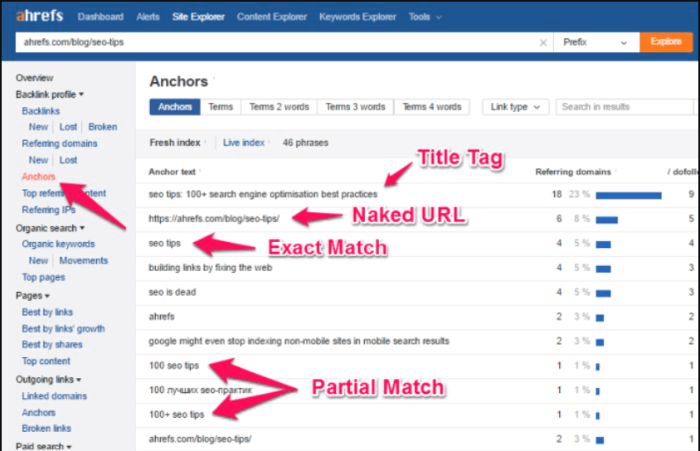
Only 10-20% of all referring domains should link to your site in full or in part, depending on the goal.
If you’re not actively building links, you’re unlikely to fall victim to this blunder. However, it’s always a good idea to keep an eye on your backlink portfolio.
5. Link-Building for the Purpose of Spamming
Even though we’ve already discussed this to some extent, it’s worth repeating. There is a correct technique and a wrong way to obtain backlinks.
Link directories, blog comments, paid links, and link schemes are all clear offenders. You should also reconsider your affiliation with any referring domains. Do they use effective connecting techniques? Do they just employ white-hat SEO strategies? The answers to these two questions will help you determine whether maintaining the association is good for your backlink profile or harmful.
Frequently Asked Questions (FAQs) About Google SEO
Is Google’s SEO service free?
Google’s search results are completely free. Google’s algorithm determines search rankings, and no one can pay for a higher ranking.
How long does it take to Google-optimize my website?
If you follow the best practices suggested in this article, it will take some time to complete all of the improvements on your website. The length of time depends on the size of your site and the number of people working on it. The general agreement on how long it takes to see organic outcomes is four to six months.
How can I use SEO to dominate the SERPs in 2022?
Focusing on white-hat strategies that have been proven to work is the key to any effective SEO plan. All of this has already been mentioned.
Is there a chance that Google’s algorithm may change significantly in 2022?
Every year, Google publishes millions of algorithm adjustments. In terms of major upgrades, one to watch for in the first half of 2022 is Google’s goal to integrate page ranking signals into desktop search. By March 2022, the project should be completed.
Conclusion: Using Google to Dominate SEO
Whatever else changes about Google’s algorithm and SEO, one thing remains constant: relevant, high-quality material is always a good place to start.
However, if you follow our on-page and technical SEO techniques outlined above, you’ll be able to dominate Google’s SEO in 2022. Why? Because these strategies help improve your content for both visitors and crawlers, they make your site look cleaner and more interesting.
Which of the approaches will you adopt first on your website?